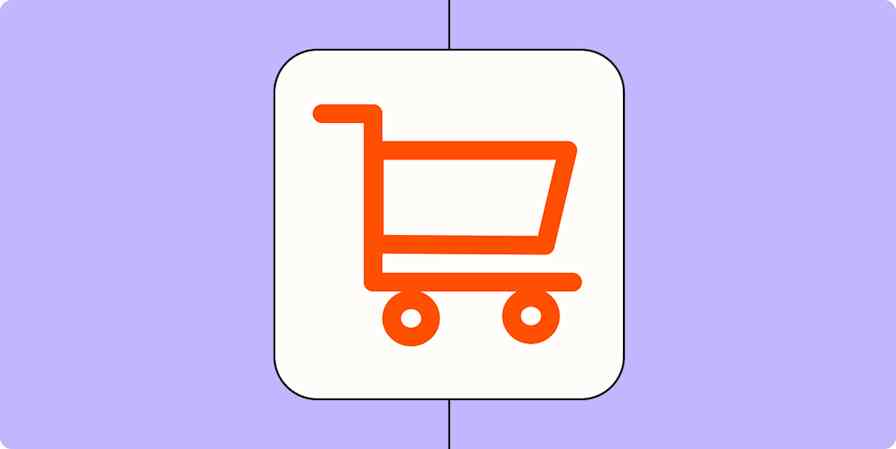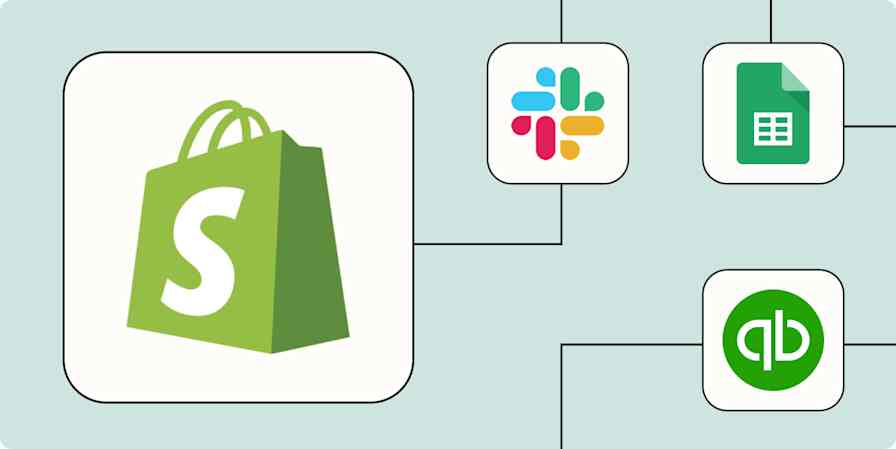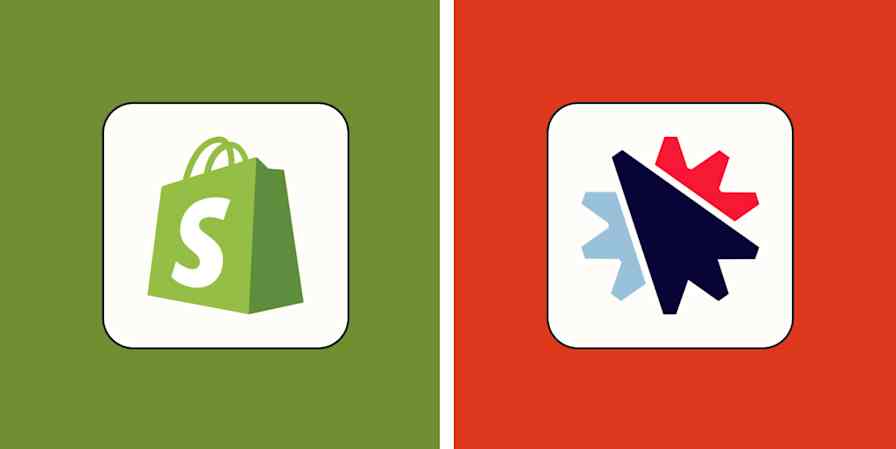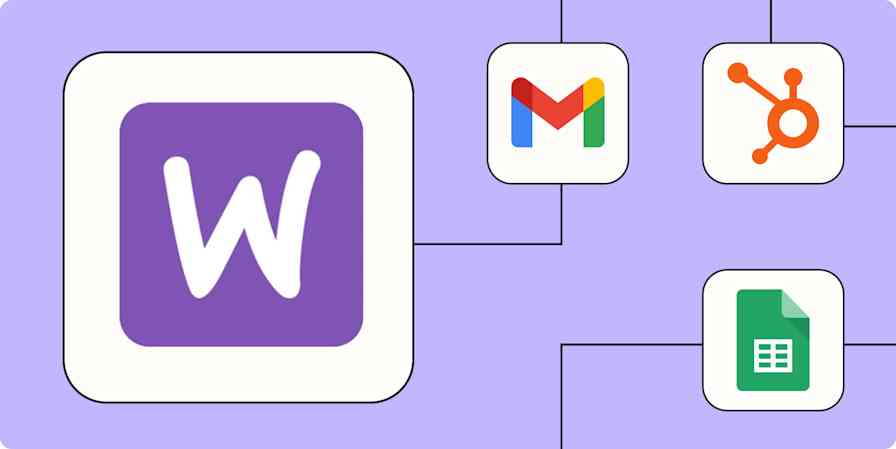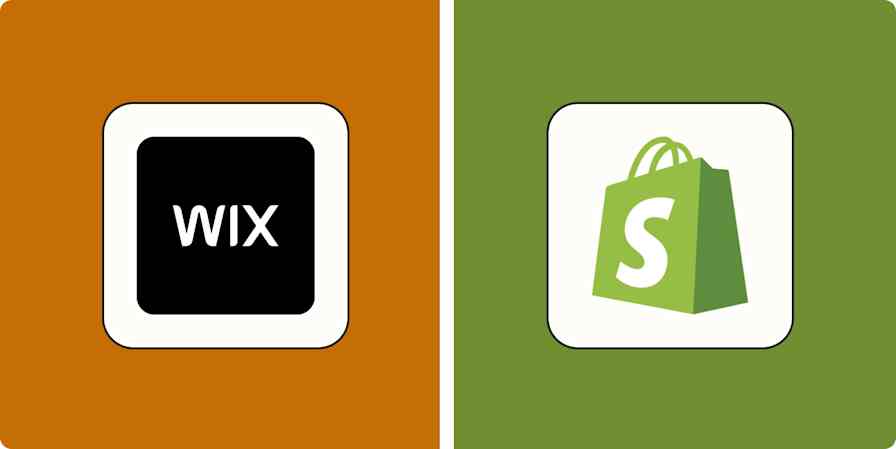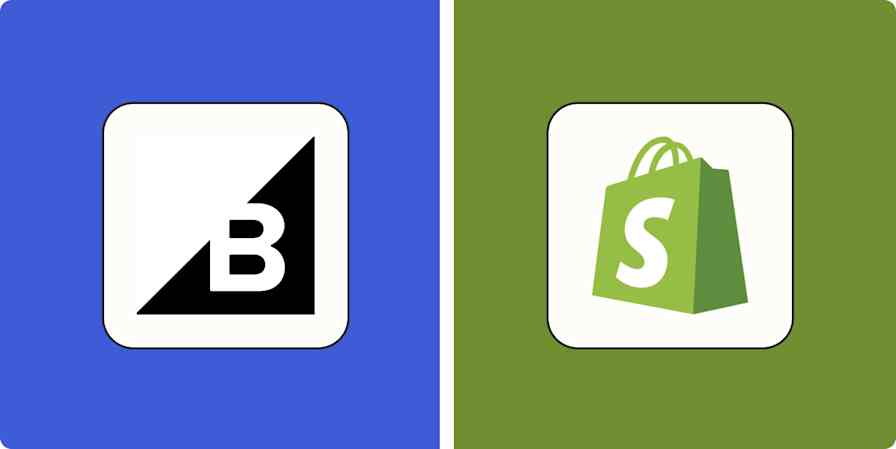During the pandemic, one of the more unexpected things I got into was Dungeons & Dragons. As a result, I started dedicating shameful amounts of time looking up quirky dice sets (including this ungodly baked bean set, which I'm one compulsive late-night online shopping session away from buying).
I even got my party together to chip in and buy some high-end dice for our DM on our one-year anniversary of the campaign. We sprung for a gorgeous set inlaid with gold foil and real flowers (our DM is also somewhat of an amateur botanist—yes, we contain multitudes). When they arrived, they proved to be literal works of art, just as beautiful as advertised.

But what really put them over the top was the packaging: a spooky, elegant little box with gold-embossed text and a thank-you note complete with care instructions and a discount on the next set.
Obviously, the bread and butter of your eCommerce business is the quality of your product. But personalizing each purchase with thoughtful details and little extras is what will push your brand from run-of-the-mill great to truly memorable and worthy of brand loyalty. I know I certainly will be going back to this dice maker for my next set (unless, of course, I finally pull the trigger on the baked beans first).
What is eCommerce personalization?
eCommerce personalization refers to any number of ways an online store customizes the browsing and buying experience to fit the user. Personalization can be based on data like past purchases, browsing history, personal demographics, and expressed preferences.
In much the same way that email segmentation allows marketers to tailor drip campaigns to different audiences according to identity and consumer behavior, eCommerce sites can offer data-driven custom experiences to their customers to increase brand recognition, add value, and promote loyalty.
Benefits of personalization in eCommerce
From the consumer side, these little details may seem like just that: little details. So if you've dismissed eCommerce personalization because you're one of those people who tosses those fancy thank-you notes straight in the recycling, you might think it can't possibly be worth the expense.
But take a look at this: A 2021 study by McKinsey found that companies that do personalization really well generate 40% more revenue than those whose personalization is just so-so. Forty percent. And that's just compared to those with average personalization efforts.
What's more, not personalizing your customer experience can actually deter potential buyers from your brand—the same study found that 71% of consumers now expect personalization from the brands they shop from.
What can be personalized in eCommerce platforms?
With all this talk about the power of personalization, you might be wondering what tangible aspects of your eCommerce site can be tailored to your customers' unique needs and preferences. After all, in the world of online shopping, personal touches are the equivalent of a store clerk remembering your name and favorite brand. Here's a snapshot of what can be personalized:
Product recommendations: Remember the dice set adorned with gold foil and flowers I was gushing about earlier? A smart eCommerce platform would recognize my penchant for unique dice and suggest similar artisanal sets.
Browsing experiences: Instead of adopting a one-size-fits-all homepage, consider optimizing your site to reflect the preferences and interests of your target audience. This doesn't mean creating different landing pages for each visitor, but rather ensuring that the elements on your homepage align with what your core audience values. For instance, if your demographic leans toward the quirky or niche, showcase products or features that cater to their unique tastes, such as themed dice sets for the D&D enthusiasts like me.
Content suggestions: While eCommerce personalization primarily focuses on shopping, the overall online experience can be enhanced with tailored content suggestions. If someone recently bought a dice set, you could recommend a blog post on D&D character builds or a video tutorial on different tabletop dice games. Not only does this enrich their visit, but it can also keep them engaged longer on your platform. Platforms like YouTube often use this strategy, suggesting videos based on past viewing habits, and eCommerce sites can adopt a similar approach for blogs and articles.
Personalized promotions and discounts: Based on the customer's buying history and on-site behavior, offer tailored discounts or special deals. Let's say someone frequently browses high-end dice sets but never makes the final purchase—a limited-time discount on those sets might just seal the deal.
Interactive quizzes and tools: Allow customers to interact with and find products that fit their specific needs or desires by embedding interactive quizzes or tools directly within product category pages or as a prominent feature on the homepage. Imagine a "Find Your Perfect Dice Set" quiz where choices determine the style, material, and price range of the suggested products. It's fun, engaging, and incredibly personalized.
Tips for implementing eCommerce personalization
So we've established that you probably need to be making a personalization effort in your eCommerce business—but what's the right way to put it into practice? Here's what makes a personalization tactic effective.
Make it scalable
I have never not been charmed by a handwritten note in a package from a small online retailer. That's great business for a boutique operation, but if your personalization process requires individual attention to every package you ship, you could struggle when business starts picking up.
A good personalization tactic is scalable—that is, it can grow with increasing sales without stretching your time, energy, or resources too thin. It should also maintain quality as you grow (example: longtime customers may resent that they used to get handwritten notes but now only get standard business cards).
If you need a little help, there are apps that help you scale almost everything—including handwritten notes.
Collect new user data
Think back to your first day at a new job or school. First impressions matter immensely, and the same holds true for digital experiences. When diving into eCommerce personalization, gathering data from new users is a logical starting point. As they navigate and interact with your site for the first time or provide information through opt-in forms and surveys, you gain invaluable insights about them.
By capitalizing on this fresh data, you can immediately craft a tailored experience that resonates with newcomers, making them feel acknowledged and appreciated.
Continue collecting returning user data
Once you've set the stage for new users, it's equally important to understand and cater to the needs of returning customers. Loyal customers form the bedrock of your eCommerce enterprise—you can't become complacent with the data you've already gathered. Every visit from a returning user is an opportunity to deepen your understanding of their preferences and needs.
Behavior tracking: Unlike new users, where initial impressions dominate, with returning users, you can analyze patterns over multiple visits. This might mean tracking which products they view repeatedly or which content they frequently engage with.
Feedback mechanisms: Implement regular feedback forms or post-purchase surveys. They've interacted with your site enough to give detailed and valuable feedback.
Loyalty programs: Not only do these programs incentivize repeat business, but they can also be structured to gather data. For instance, offering points for product reviews or completing profile information.
Personalized email campaigns: Track which links they click on in personalized emails, giving insights into their evolving interests.
Wishlist and cart analysis: Understanding what returning users save for later can provide insights into potential future purchases.
Every additional piece of information helps refine and enhance the personalization process. This continual refinement can lead to even more accurate product recommendations, perfectly timed promotions, and a more seamless shopping experience, boosting sales and loyalty further.
Use that data
Adding a little extra flair to all of your materials definitely helps your brand make a good impression on buyers, but a high-quality personalization strategy should include tactics that respond to the unique characteristics or needs of each customer.
For example, I recently bought a cupcake from my local bakery for a friend's birthday. In passing, I mentioned to the baker what I was buying the cupcake for, and he reached under the counter and pulled out a branded party hat and an individual candle and taped them to the bakery box. I will probably never go to another bakery again because it was just the sweetest thing.
Does everyone need a candle and party hat to enjoy an everyday, non-birthday cupcake? While you can (and I would) make a compelling case for that, this custom perk was catered to a common but specific purpose for the bakery's product. It shows awareness of the clientele and their needs. An intelligent personalization tactic is just as perceptive about who's shopping for your products and why they purchase them. Here are a few examples of what that can look like for eCommerce:
Gift wrapping and custom message add-ons for commonly gifted items
Upsell discounts so a gift-purchaser can treat themselves, too
Relevant bundling suggestions on items that tend to be purchased for specific occasions
Add automation
When it comes to eCommerce personalization, automation is more or less a requirement. It would be far too time-intensive to create customized experiences for each of your shoppers on your own.
That's not to say you can't also throw in the occasional handwritten note when you have the time, but your core personalization strategy shouldn't rely on personally involving yourself with every sale. Instead of sending out individual review requests to every customer, for example, you can automate the process by having requests sent automatically one week after purchase confirmation to the customer's registered email address.
Need more inspiration? Here are a few more things you can use automation to streamline in eCommerce:
Let users pick up where they left off
Imagine browsing through an online store, adding items to your cart, getting distracted, and then returning to find your cart empty. Frustrating, right? A savvy eCommerce site understands the value of continuity. Cookies help with this, but features like "continue shopping" or "saved cart" not only enhance the user experience but can significantly boost conversions. It's like a helpful store assistant reminding you of the dress you liked the last time you visited.
Try localizing suggestions
The global reach of eCommerce brings unparalleled opportunities, but it also comes with the unique challenge of addressing a diverse audience's needs and expectations. Catering to different regions means more than just understanding their buying patterns; it means truly recognizing and respecting their cultural and environmental nuances. For instance, while promoting summer wear in July is apt for the U.S., it would be counterintuitive for Australia. Similarly, the importance of aligning product offerings with regional holidays and festivals can't be overlooked.
But beyond these considerations, there's the paramount task of ensuring that these cultural nuances are presented both accurately and respectfully. It's not about superficially plastering regional symbols but diving deep and, if needed, consulting with local experts or representatives to get it right. Empowering users to set their preferences can add a layer of personalization, allowing them to choose between local and international content. In essence, by dynamically adjusting website content based on location data, eCommerce platforms can mirror the warmth and understanding of a local brick-and-mortar store, making users feel truly valued and understood.
Set up behavioral triggers for in-session users
Engaging users who are actively browsing your site can be a game-changer. By setting up behavioral triggers, such as a gentle "Before you go" message or a limited-time offer, you tap into real-time decision-making. It's akin to a salesperson guiding you toward a deal just as you're contemplating a purchase.
Don't forget to retarget recent users
The digital footprint left by users as they interact with your website is invaluable. Retargeting, a strategy often misunderstood, aims to harness this footprint for more efficient engagement.
By launching carefully crafted campaigns, such as those through social media or Google ads, aimed at users who have recently engaged with your site, you can enhance recall and re-engage potential customers. Ideally, interactions within the past one to two weeks should be prioritized, as the brand memory remains relatively fresh.
This strategy serves as an online parallel to a customer seeing an advertisement for a product shortly after observing it in a physical store, reinforcing brand presence and intent to purchase.
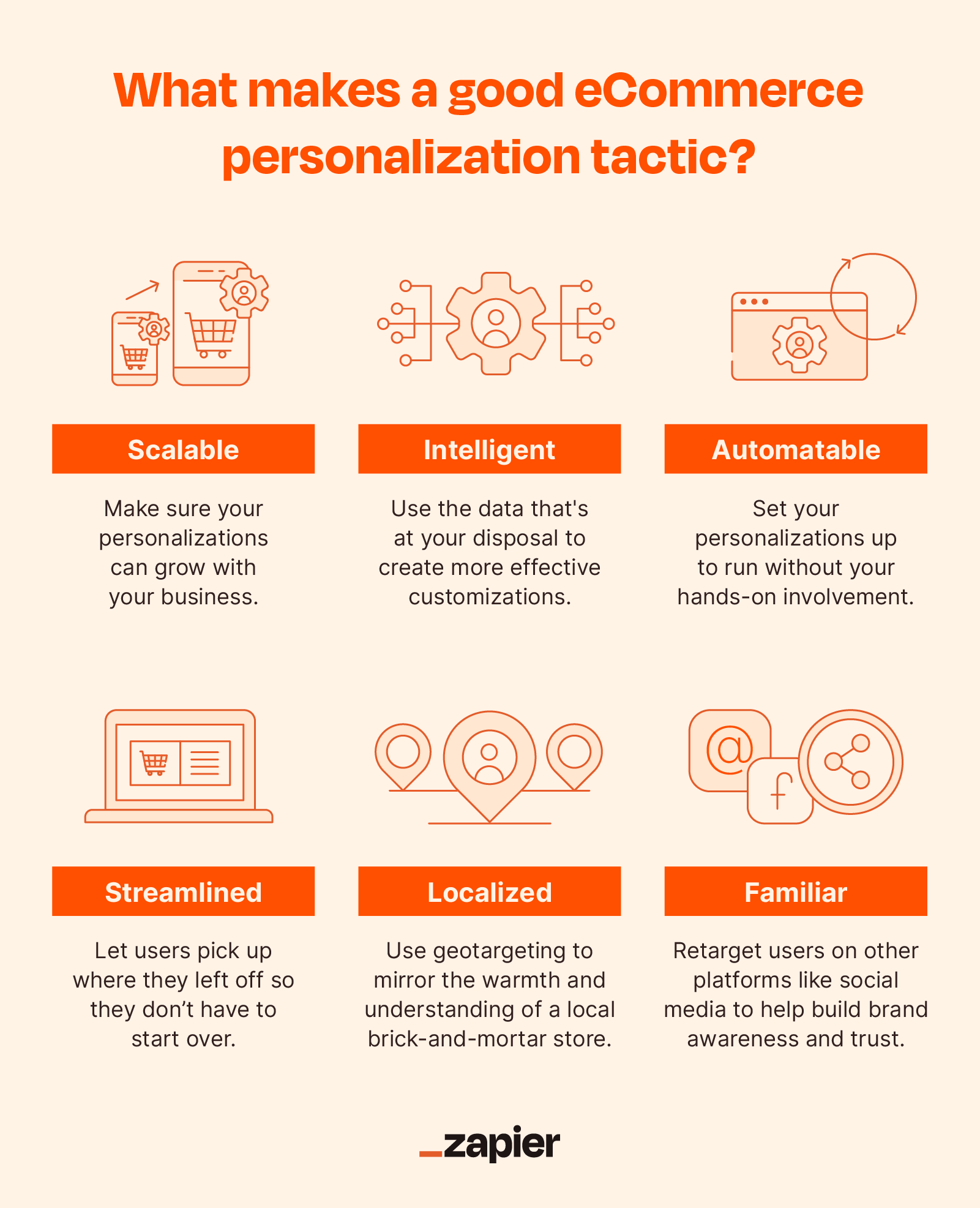
14 eCommerce personalization examples
Now for the good stuff: what cool things can you do to customize your eCommerce shopping experience? These are just a few ideas to get your juices flowing, and by no means should you limit yourself to them—personalization is a place where you can really express your creativity and brand identity and test out new ideas.
1. Personalized product suggestions (Amazon)
Do your product pages include related product recommendations? Often these lists are based on seller-side data—e.g., what products are most frequently purchased alongside whatever product the user is looking at right now. But a smarter approach would be to base your recommendations not just on your own seller data, but on this individual customer's buying and browsing history.
An example in action: because I crouch like a goblin when I'm working at my desk, I've been eyeing this absolutely absurd office chair for some time now.

I may think this is the world's most perfect goblin-posture chair, but what if there's a better one, or a similar-enough one at a lower price point? If I were on the fence in any way, the "Based on your recent views" section, which is personalized to my viewing history, could still result in a sale by showing me a product I'm ready to hop off that fence for.

Just because Amazon does it, doesn't mean you have to be Amazon to add the same feature to your online shop. The top eCommerce platforms should offer this sort of functionality so you can start utilizing user shopping behavior.
2. Timely discounts (HBO Max)
Just as I'm more likely to buy one of the recommended chairs above than the super-expensive one I really want (sigh), buyers are most susceptible to deal offers that meet them at the right place at the right time. Spending $175 on an office chair is still pretty ridiculous considering I have a perfectly good (albeit traditional) one already, but in the context of my browsing really expensive chairs, it feels like a comparatively good deal.
You can use the same data that drives personalized product suggestions to target customers with discounts that match what they're shopping for. You want to time these offers strategically—there's no point in offering a discount to someone who was ready to pay full price. But if your abandoned cart automated email or your exit banner contains deals on whatever's on your customer's wishlist, you may tempt them to make a purchase they were getting ready to pass on.
Here's an example: just after the premiere of this long-awaited show, this convenient HBO MAX ad hit my Instagram feed.
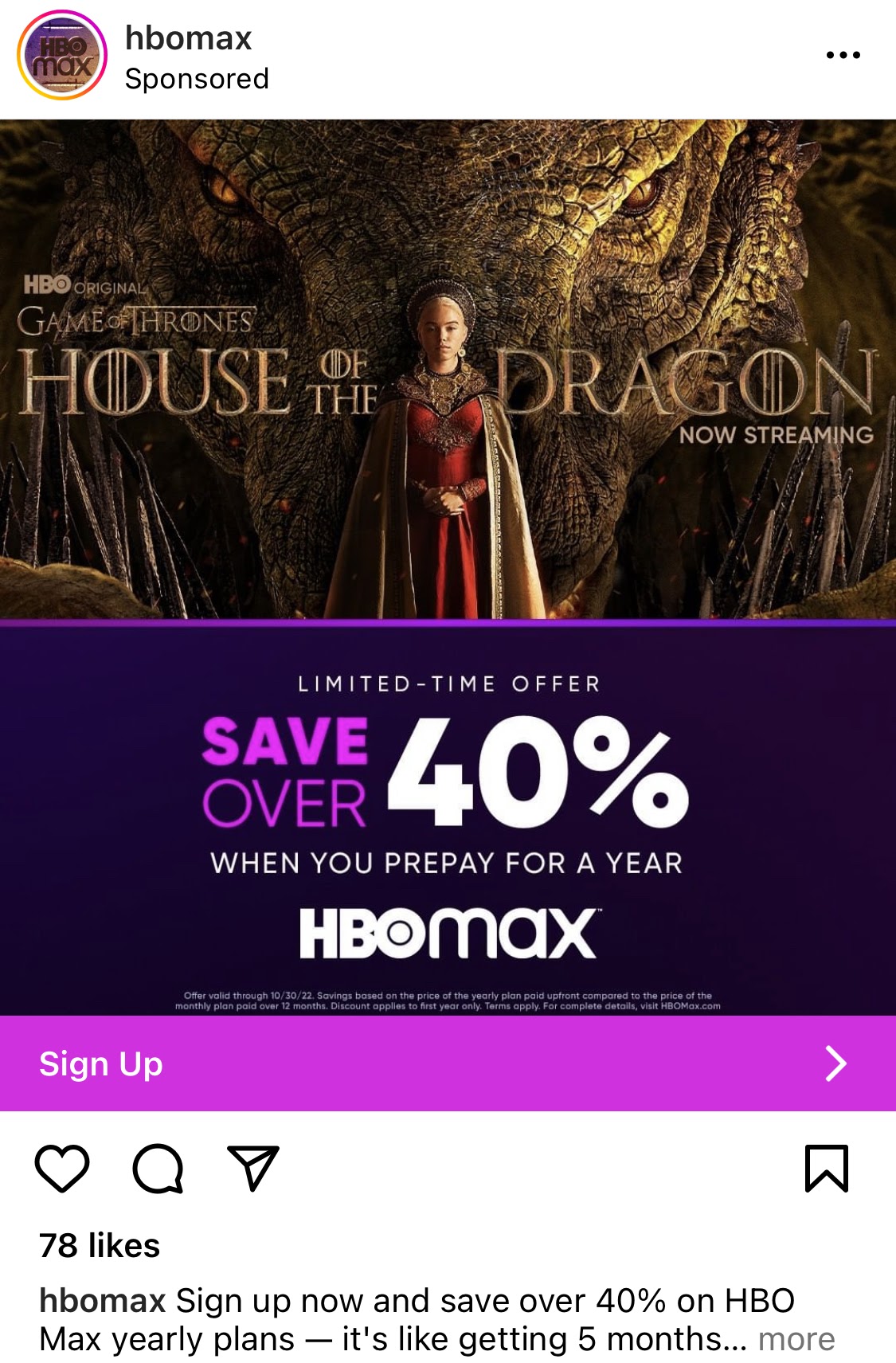
3. Target localization (Land Rover)
The most common data category to use for personalization is individual behavioral data: purchase history, browsing history, email open rates, link click-throughs, and so on. But you can also personalize the shopping experience geographically.
Take this ad from Land Rover, for example. While it very clearly did not take into account my purchase history or even browsing history, it did notice that I was in Mexico when I received the ad.

4. User-generated content (Dragon Secret)
Here's a way to make the most of someone's customer data: run your ads on social media platforms that already do most of the targeting work for you. Instagram and TikTok, in particular, work very hard to make sure that their in-app shopping opportunities blend seamlessly with each user's interests. Run your ads there, and let them do the work of finding your prospective customers.
This works for professionally produced ads, but what's even more effective is promoting user-generated content (UGC) or social content that your buyers created on their own. Influencers are required to include a "Paid partnership" tag for paid promotions, so when I see content that doesn't have that, I know that the creator is posting about that product for no reason other than that they love it. If you were wondering what a paid post from an Italian D&D influencer might look like, I got you:

To really make the most of your social presence, with Facebook Custom Audiences, you can even use your own existing customer list to create targeted ads on Facebook to continue growing both your list and your Facebook audience.
5. Social retargeting (D&D Beyond)
With social media, you can also use some strategic timing to make sure your ads land on the right account timelines at the right time. The principle here is the same as abandoned cart emails: target users who have recently shopped your store or have been engaging with your emails and other content.
The more you appear in your customers' day-to-day lives, the more likely they are to make their way down the lead generation funnel and make a purchase. Take this ad from D&D Beyond, for example:

6. Post-purchase thank-yous (Insomnia Cookies)
It may seem to customers that the purchase is the end of the ride, but as brands, we're always hoping those customers get back in line afterward for another go. But if you've ever purchased something you love—a boutique dice set, let's say—and then found yourself wondering months later where you got it, you know even happy customers may not automatically return.
Repeat buyers often need to be nurtured by being reminded and incentivized to come back. In a crowded online marketplace, they may not explicitly remember your store name, which is where post-purchase check-ins can help. Following up with a thank-you offers three major benefits:
It helps keep your brand top of mind for customers.
It can incentivize customer reviews.
It can incentivize repeat purchases.
If you can nail all three benefits, you've achieved perfection. A great follow-up on a successful sale might include a link to a review form (like your Google My Business page), a one-time discount on their next visit, or both.
Here's an example thank-you email from Insomnia Cookies after purchasing a birthday gift for a colleague.

By automating thank-you campaigns, you can easily work this tactic into every sale.
7. Curated bundles (Spotify)
Let's play a game. It's called "Log in to Spotify and Tell Me What You See." While I wait, here's mine:

If you played, you likely noticed most of Spotify's homepage real estate is dedicated to playlists curated by staff and algorithms. These playlists account for nearly a third of their listening time. Of that listening time, about half is dedicated to algorithmically curated playlists based on users' listening history.
Spotify may not be an eCommerce platform in the same way as your business, but the principle is valuable. They have tens of millions of songs (read: products), and that sort of catalog can be overwhelming. Unless users come to the platform with a specific song (product) in mind, they need somewhere to start.
By creating similar curated product bundles with themes, you can improve users' shopping experience. Consider adding seasonal bundles (Beach Vibes, All About Autumn, Spring Must-Haves), holiday collections (Ghoulish Goods, Here for Hanukkah, Cozy Christmas), or other topical themes specific to your products. Heavy alliteration not required, but encouraged.
8. Recent bestsellers (Sephora)
Going back to Spotify, their most popular playlists show users love culling those 70 million song choices down to a handful of the most popular picks. Today's Top Hits and Global Top 50 account for 43.67 million followers, which, if my math is correct (always a risky proposition when 10-sided dice aren't involved), accounts for a quarter of the top 20 most-followed playlists' followers. Researchers have demonstrated the same concept in non-Spotify contexts too.
You can probably already see how this can apply to your eCommerce business. If you sell many products, personalized bestseller lists can offer shoppers a convenient way to whittle down their options quickly.
A good example of this is Sephora's "Bestsellers" pages. Sephora provides a general bestseller page but also links to pages with tailored products under categories like makeup, skincare, fragrance, and more.

Just like Spotify listeners, beauty product lovers may appreciate being able to get straight to the most popular products.
9. "We miss you!" re-engagement messages (Otrium)
Who doesn't want to be missed when they're gone—especially when it means 20% off your next purchase?
Given that the cost of acquiring new customers is vastly more expensive than that of retaining existing ones, reducing these losses represents a major revenue-preserving opportunity. Re-engagement tactics, like the "We miss you!" message, incentivize past and would-be customers to stay loyal or continue with their purchasing journey.

A successful re-engagement campaign should be relevant and valuable. By offering data-driven recommendations based on user browsing behavior to cross-sell or upsell, or by incentivizing returns with discount codes, you can make your brand's presence felt and potentially turn inactive customers into return customers.
10. Targeted on-site pop-ups (Prose)
Pop-ups are at their most effective when they're catered toward specific users according to their browsing habits and their position in the sales process. Here are a few examples of targeted pop-ups that meet users where they are:
Discounts to new users for their first purchase
Discounts in exchange for newsletter sign-ups to users who have browsed but didn't add to their cart
Free shipping above a spending threshold for users with items in their cart totaling below that threshold
Abandoned cart reminders to users with items in their carts
Welcome-back offers to returning customers
Browsing history reminders to returning shoppers

11. Customer review engagement (Trust Pilot)
When's the last time you were so thrilled to buy something you didn't even need to bother reading reviews first? Since basically everyone uses reviews to guide purchasing decisions, eCommerce marketers would be smart to work this into their personalization strategy.
At the post-purchase phase, reviews affect customer experience by allowing you to maintain engagement with happy customers and potentially atone for flukey sub-optimal buying experiences. At the pre-purchase phase, reviews (and your responses) influence the way would-be shoppers perceive your brand.

Engaging with users shows that your business sees them and values them. And by automating review follow-ups, you can easily store and respond to reviews with maximum efficiency.
12. Augmented reality experiences (Ray-Ban)
One of the challenges of online shopping is the inability to try products in the flesh. Augmented reality (AR) seeks to bridge this gap. For example, Ray-Ban offers an AR feature where customers can virtually "try on" sunglasses using their device's camera. (I prefer classic Wayfarers, personally.)

This approach provides a closer approximation of the in-store experience, allowing users to make more informed decisions. Beyond eyewear, AR can be applied to other products, like furniture, letting customers visualize how items would fit into their space. This enhanced user experience not only aids in decision-making but can also reduce return rates due to unsatisfactory purchases.
13. Interactive quizzes (Beardbrand)
Many shoppers appreciate guidance when it comes to finding the right product for their needs. By integrating quizzes that ask shoppers about their preferences, habits, or needs, you can provide product recommendations tailored specifically for them. This not only personalizes the shopping experience but can also increase the likelihood of a purchase.
Check out this beardsman quiz from Beardbrand, for example:

14. Loyalty program personalization (Chubbies)
Loyalty programs are not new, but personalizing them can make them far more effective. Instead of offering flat rates on points, customize the rewards based on a special day, like a birthday, or a specific action you want the customer to take, like following your brand on Facebook. Chubbies does a great job with this:
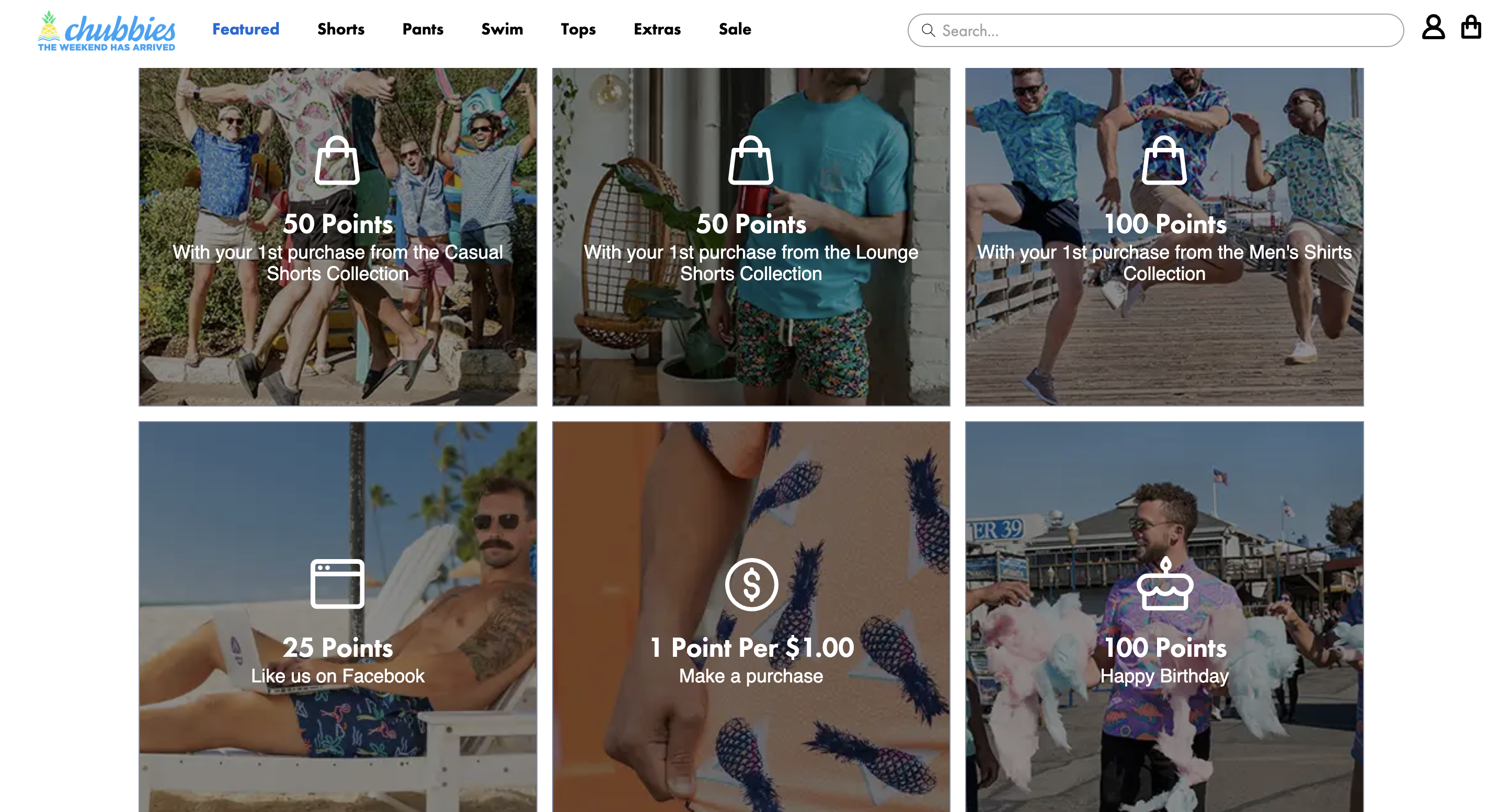
Getting the most out of eCommerce personalization
To recap, the key for a great eCommerce personalization campaign is to ensure it:
Remains scalable as your business grows
Is intuitive and catered to individual user behavior
Can be automated as part of your sales process
Personalization can lock down that first sale with a customer, but it really shines as a customer retention tactic. Whether your campaign includes all of these ideas or only one of them, it has the potential to create and nurture a lifelong fan of your brand—or at least just a repeat customer.
In the meantime, I'll be waiting for the handwritten thank-you note.
FAQ
Why is eCommerce personalization important?
eCommerce personalization is like having a savvy shop assistant who knows just what you're after. It jazzes up the shopping journey, making it tailor-fit for each user, which means more sales and fewer abandoned carts. It's not just about selling, though; it's about making shoppers feel valued. That personal touch? It goes a long way in creating loyal fans who can't wait to come back and maybe even bring their friends along.
How does personalization affect eCommerce?
Imagine if your online store just "gets" your customers. It knows what they like and what they want, and shares it with them right out of the gate. That's what personalization does for eCommerce. Instead of the same ol' same ol', businesses can dish out laser-focused promos that hit the mark. Product recommendations get a glow-up, feeling less like random shots in the dark and more like that friend who always knows the next big thing. With all that personal touch, customers stick around longer. And they're not just window shopping—they're buying into an experience.
Personalization isn't just the cherry on top; it's the secret sauce that makes everything in eCommerce just a bit more delicious.
Related reading:
The best eCommerce website building platforms for online stores
Email personalization: How to do it and examples to learn from
This article was originally published in Septmeber 2022. The most recent update, with contributions from Michael Kern, was in October 2023.


